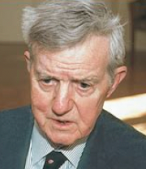Dr Fenwick: How might information be preserved between lives in reincarnation?
Psychologist Jeffery Martin has suggested that every human consists of two domains:
Domain 1 consists of our physical attributes, body, genetic profile, and the filters in the brain which are constructed by the experiences of the individual and so are different for everyone but the same in that they limit in some way the expression of the transcendent nature of the individual.
Domain 2 is a transcendent realm, containing consciousness – perhaps more easily thought of and described as awareness. Awareness can be seen as the prime generator in the universe, giving rise in its widest state to love, light, and the experience of bliss (Martin, 2019).
Awareness is understood to be the driving and creative force of the universe, which structures every moment, and has an evolutionary thrust leading to the development of the physical realm (Martin, 2019). The experience of awareness is limited by the restriction of the experiential filters constructed by the brain.
Domain 2 exists in no space, no time and thus is unknowable to the physical realm but can be made manifest and thus available to the physical brain, see chapters 7-8 in (Martin, 2019).
There are now so many of these cases that one has to accept that a memory of what happens in one life can be reproduced in a subsequent life. If such memory does exist then it is supported by people who die and live again following an ADE.
As both brain and body decay after death and a reincarnated body has no close genetic relationship to the previous one, it would not be possible, with our current science, for this to affect the genetics of a child, e.g., birthmarks on a child who is born with the stigmata of a person who has died. A non-physical component to the body must be postulated if information from a dead person is later to affect the genetic profile of the reincarnated person.
This presupposes the carryover of information in some way from one life to the next. One possibility is that at death the memory component of a life goes into an area of the universe which has no space and no time. When the very wide experience is called back from no space, no time, it will be reinterpreted by the filters in the growing child and thus will be similar though not identical to those of the original person.
It is unlikely that the space into which memory goes can be determined by classical physics, or we would already have had hypotheses to explain it. It is thus reasonable to assume that these are quantum mechanical spaces which have no space and no time (Wheeler, 1990).
A Hilbert space must be a candidate, and I would ask physicist Dr Vasileios Basios to take the witness stand and briefly explain what that is:
Dr Vasileos Basios
Hilbert spaces express the basic tenets of all quantum theories and quantum field theories and transcend the wave-particle duality. They are extensions of the classical concept of vector spaces which themselves generalize, by abstraction, spatio-temporal relations such as distance, direction, and angle. Yet, Hilbert spaces are spaces of functions, relations, operations, and operators beyond space & time. Not only do they describe all quantum phenomena but also express the quantum logic that underlies them, as well as the axioms of modern quantum information & quantum communication theories. Moreover, it recently became clear that they constitute the foundation of treating, from first principles, quantum theory as a purely informational theory (D’Ariano, 2017).
It would be reasonable to argue that ‘awareness’ is a transport operator or ‘projector’, and since it is linked to consciousness it would be able to transfer information back and forth from the space.
Dr Fenwick Resumes:
To understand awareness and the mechanism of perception we must first discuss non-duality. In the ordinary everyday world, people are fixed in subject/object consciousness (dual consciousness or awareness). Information from the outside world is analyzed by the brain and then projected back into the outside world. So we experience the outside world with an internal perceiver. However, in non-duality the structures relating to the perceiver vanish and thus the outside world becomes just one thing with the inside world. There is no perceiver looking out, just experience of the present moment.
Current science is our religion, and it has no explanation for, and therefore no belief in, any of the phenomena described in this article. And like the followers of any religion, most of us find it easier to believe than to observe. But if we do observe, and try to do so objectively and honestly, a new belief system will eventually begin to evolve.
What science can do, despite its limitations, is to look at the personal experiences that have formed the basis of many people’s belief in reincarnation. It can assess the quality of the evidence that they have indeed lived a past life and it can see how far the phenomenon of past-life memories can itself be explained within a scientific framework. If there are phenomena which can’t be explained within a scientific framework then we must decide whether to ignore the many and varied accounts of them we have been given, or to acknowledge that our science is incomplete.
“To Be And Not To Be. This is The Answer: Consciousness Survives,” essay for the 2021 Bigelow essay contest submitted by Dr Peter Fenwick & Dr Pier-Francesco Moretti, Dr Vasileios Basios, and Martin Redfern. The complete essay with footnotes is available at https://bigelowinstitute.org/contest_winners3.php.










